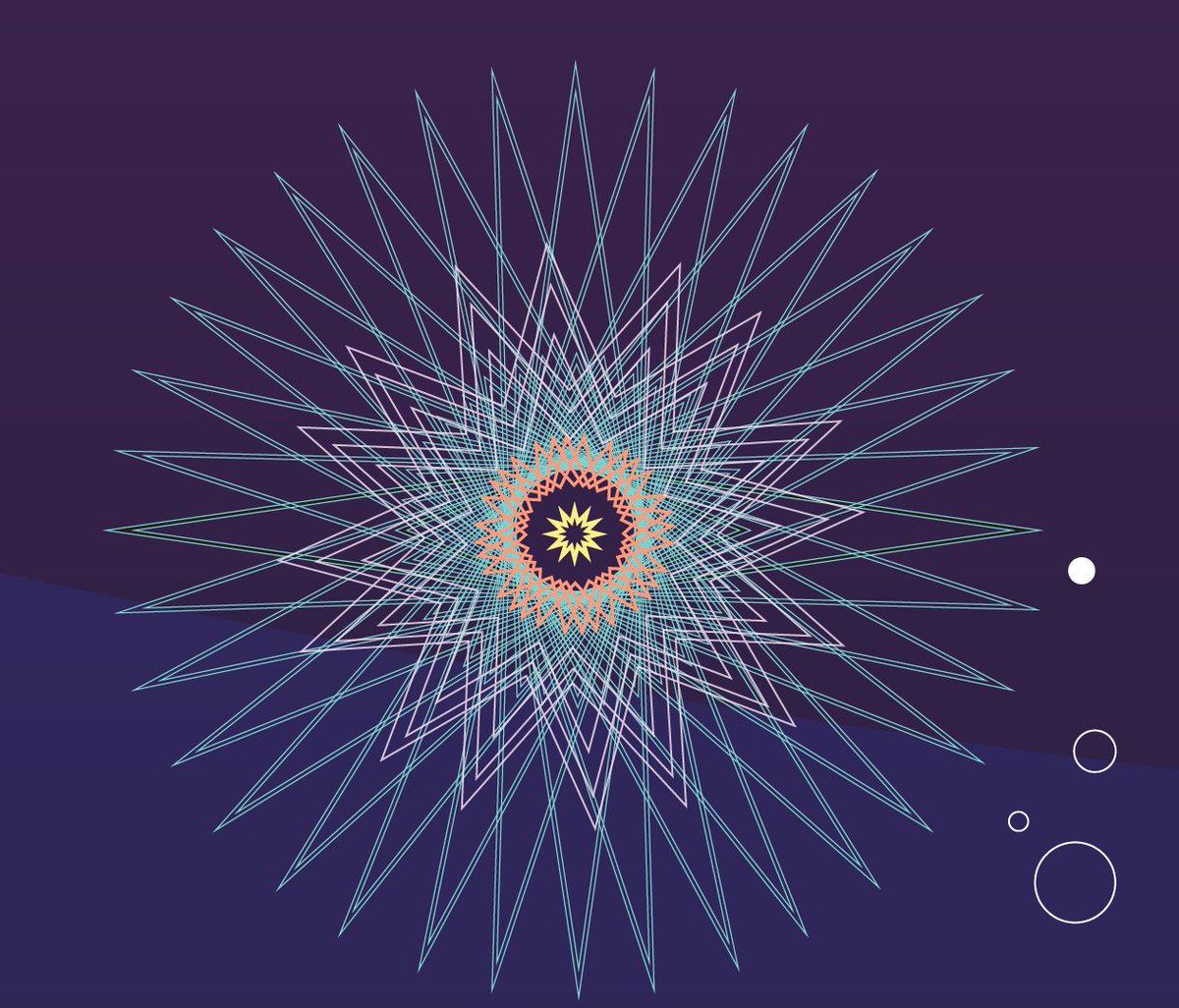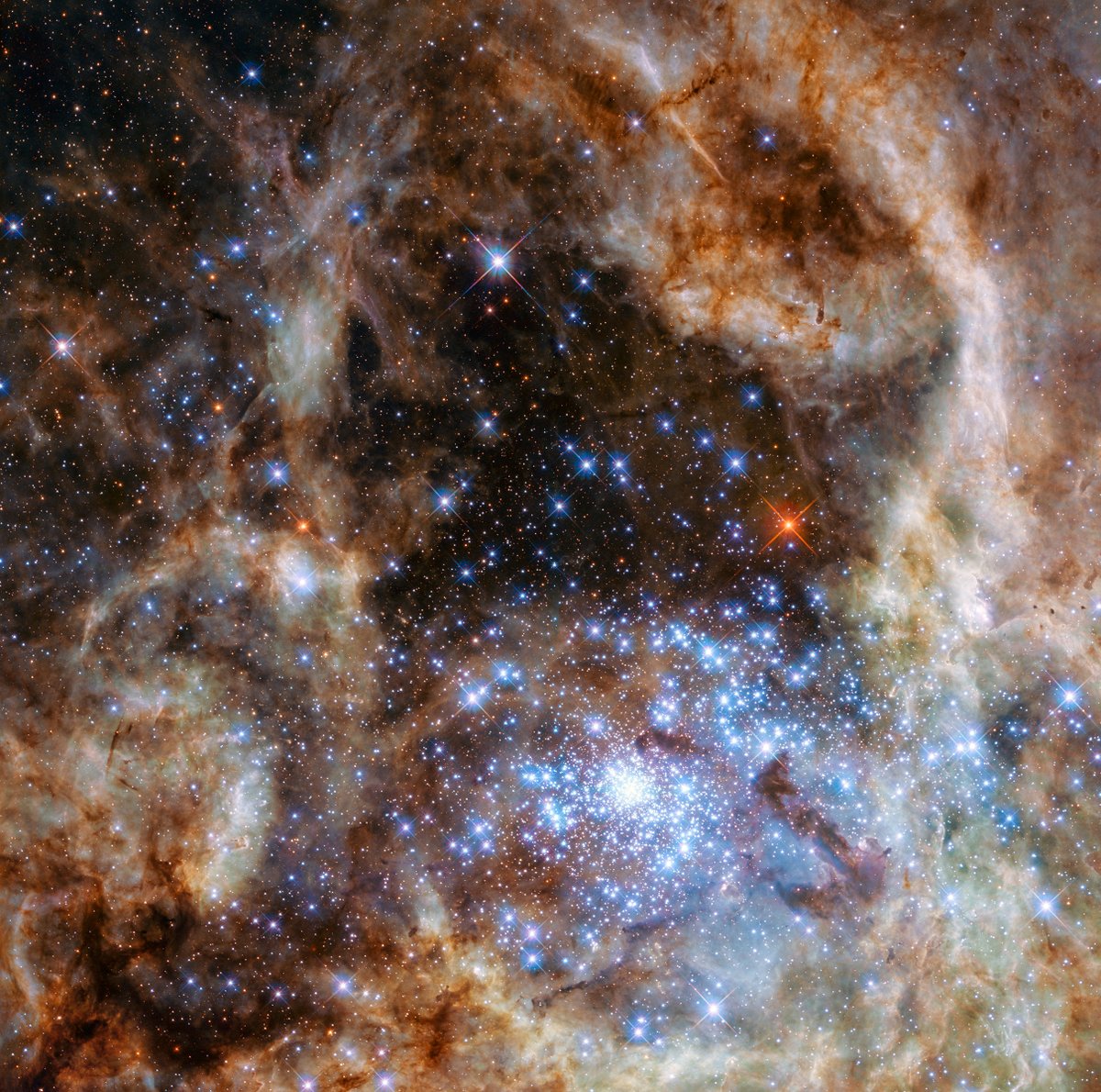Bright stars create unique patterns called diffraction spikes, which are produced as light bends around the sharp edges of a telescope. Most reflecting telescopes—including #NASAWebb—show spikes as light interacts with the primary mirror and struts that support the mirror. (1/5) 

Light—which has wave-like properties—tends to radiate from a point outward. When light waves interact, they can either become more amplified or cancel each other out. These areas of amplification and cancellation form the light and dark spots in diffraction patterns. (2/5) 

Primary mirrors in reflecting telescopes cause light waves to interact as they direct light to the secondary mirror. So, even if a telescope had no struts, it would still create a diffraction pattern. The shape of the mirror and any edges it has determine its pattern. (3/5) 

The number and position of struts holding up the secondary mirror determine the struts’ diffraction spike pattern. When light hits a strut, the light bends into a single, perpendicular pattern of amplified and cancelled light—represented by a yellow/red/blue dashed lines. (4/5) 

#NASAWebb’s eight-pointed diffraction spikes are defined by its primary mirror and three struts. Its struts are designed to overlap with the diffraction spikes created by the hexagonal mirrors.
Full “Diffraction Spikes” graphic: webbtelescope.pub/DiffractionSpi…
#UnfoldTheUniverse
Full “Diffraction Spikes” graphic: webbtelescope.pub/DiffractionSpi…
#UnfoldTheUniverse

• • •
Missing some Tweet in this thread? You can try to
force a refresh


















